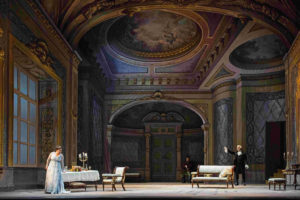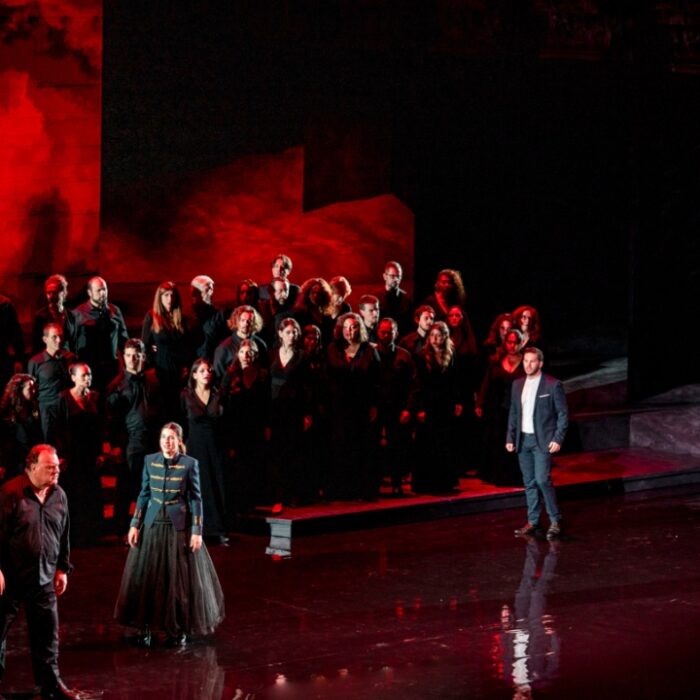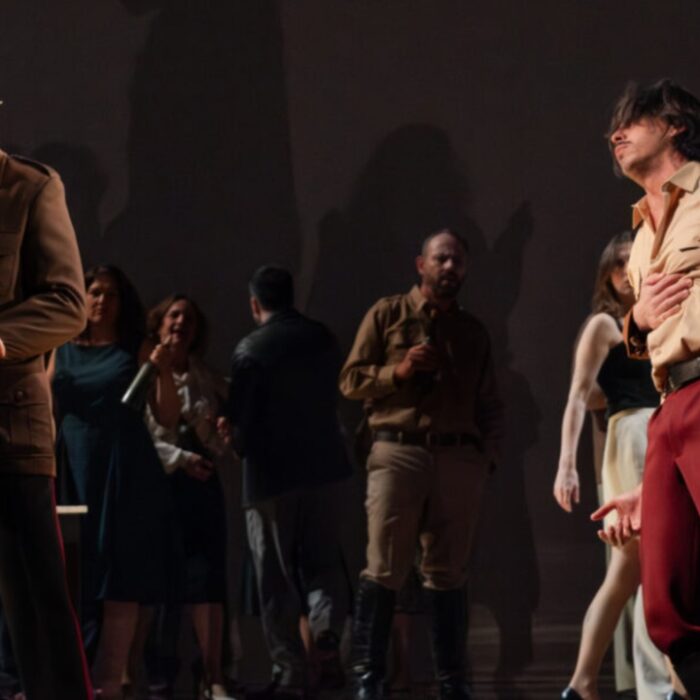
Teatro Dell’Opera di Roma 2018-19 Review: Tosca
Nostalgia Doesn’t Quite Deliver Puccini’s Drama Showstopper With Style
By Eric Simpson(Credit: Yasuko Kageyama / Teatro dell’Opera di Roma)
What is it about “Tosca” that seems to provoke the most conservative impulses? It’s hard to think of another opera that, in the little more than a century since its premiere, has been so widely and frequently performed, yet in a spirit not of renewal or discovery, but of replication. Even “Parsifal,” despite having been explicitly consigned to ossification by Wagner himself, managed to escape the eternal display case.
New Yorkers will know the phenomenon well: for its re-launch in 2016, New York City Opera chose to present not a premiere nor a new production by an exciting director, but a replica of the inaugural 1900 staging of Tosca. The infamous Luc Bondy production that appeared at the Metropolitan Opera in 2009 was hated not only for its more colorful choices, but perhaps as much for the absence of the candles and the cross in Act two. Both elements were reinstated in a generally compelling David McVicar production that opened in 2017, an apparent olive branch to a temperamental audience.
Nostalgia Resurrected
The Opera di Roma can at least claim hometown nostalgia in presenting its own reconstruction of the 1900 production, now running at the Teatro Costanzi, where it premiered. Yet even here, there is something faintly comical about seeing the glittering interior of the Basilica di Sant’ Andrea della Valle painted onto wobbly flats, when a 10-minute cab ride can get you a glimpse of the real thing.
Romans don’t seem to be convinced: on Wednesday night the house was no more than half full, meaning that some very fine music-making went largely unappreciated. The star of the evening ended up being the house orchestra, crisp and gleaming under the direction of Jordi Bernàcer. His tempos skewed towards the more deliberate end of the spectrum, but that fit with his overall reading, which milked the score for all its drama, not passing up an opportunity to add flair to a scene.
Overindulged
Bernàcer’s one real shortcoming was overindulging the singers in stretching tempo, and no one took greater advantage than soprano Svetlana Kasyan, playing the title role. She certainly had the diva affect down, finding the essence of the prima donna in gestures as small as removing her hat.
Her musical approach sadly lacked that subtlety: her performance of “Vissi d’arte,” delivered kneeling downstage under a spotlight and strung out at a dreary pace, felt more like a recital piece than an integral part of a scene.
Kasyan’s soprano has plenty of color and power, but it has a hard edge, too, and isn’t the sort of voice that can just luxuriate in its soaring high notes—an approach that embraced the passionate, dramatic side of the aria might have been more effective.
After a rough start, veteran tenor Gustavo Porta turned out to be an admirable Cavaradossi. The brawny heft of his voice gave his singing a labored quality in much of the role, which doesn’t quite suit the fiery spirit of a young dissident.
He was generally more effective in the arias, though, compensating for a lack of ease with carefully planned phrases that allowed him to flow through the line. By the third act he had warmed up nicely, so that he was able to deliver a lovely account of “E lucevan le stelle” in a voice that had a solid warmth throughout and even a little ring at its top.
Strongest of the Trio
The strongest performance among the lead singers belonged to Sebastian Catana, whose seething Scarpia dominated the stage. His portrayal was not exactly nuanced—the old-school posturing of this production doesn’t reward attention to detail—but the ease with which he committed such cruelty was unsettling nonetheless. Especially impressive was the fluidity of his dark, grainy baritone, which made his extended monologue in Act one unusually lyrical.
It was the final act that was the most effective as a whole on Wednesday night, from the gorgeous breezes summoned up by the orchestra in setting the scene, right through the arresting conclusion. Those final moments, in which everything suddenly comes apart, are irresistible in just about any form. For an instant, there seems to be a real glimmer of hope left for Floria and Mario, and within a matter of minutes, he is dead, Tosca is wailing over his body, the soldiers in the passageway are shouting, and suddenly she leaps over the wall to a last fanfare for full orchestra. The speed with which total confusion sets in is exhilarating.
Which makes it all the stranger that we find ourselves here, 119 years on, trying to recreate the opening-night performance of Hericlea Hericli night after night.
“Tosca” on the page is vivid, violent, unsettling, yet is so often stifled by the fetishization of “authenticity”—so why do we continue to insist on having our “Tosca” pickled?


